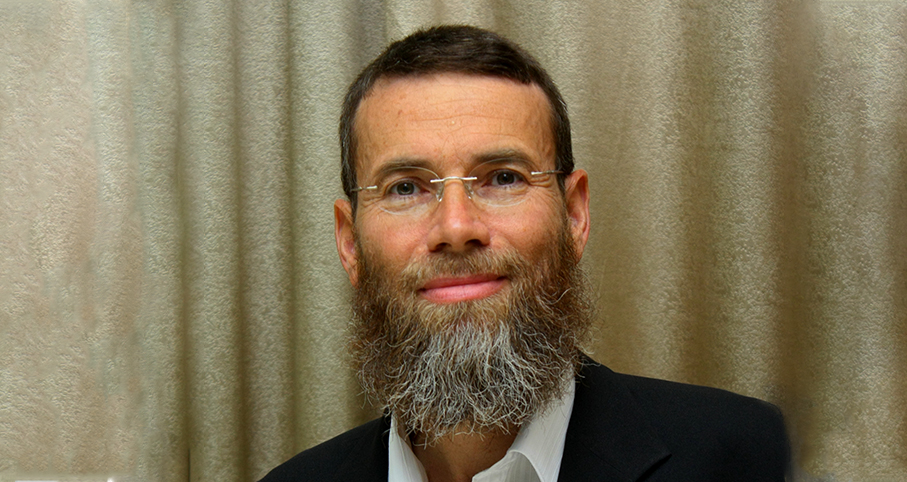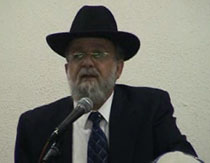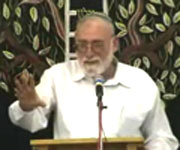Beit Midrash
- Jewish Laws and Thoughts
- Jewish Laws and Customs
- Various Subjects
When Hillel Hanasi created the new calendar, he incorporated in its calculations several innovations. The two major changes in this new calendar are:
(1) When is there a leap year
The leap years now occur following a regular pattern of seven leap years and 12 non-leap (usually called "common") years in a 19 year cycle. The third, sixth, eighth, eleventh, fourteenth, seventeenth and nineteenth years of the cycle are always leap years, and the rest are common years. This year is the fourteenth year of the cycle, and thus is a leap year.
(2) The Haves versus the Have-nots
The length of most months is now predetermined. Tishrei, Shvat, Adar Rishon (which exists only in a leap year), Nissan, Sivan, and Av always have 30 days; whereas Teiveis, regular Adar (in a common, non-leap year), Adar Sheni (in a leap year), Iyar, Tamuz and Elul are always only 29 days long. The two months of Cheshvan and Kislev are the only months whose length varies, sometimes 29 days and sometimes 30. 2 A year in which both Cheshvan and Kislev have only 29 days is called chaseirah, lacking or defective; one in which Cheshvan has 29 days and Kislev has 30 is called kesidrah, as expected or regular; and one in which both Cheshvan and Kislev have 30 days is called sheleimah, full or excessive.
The terms chaseirah, kesidrah, and sheleimah apply in both common and leap years. 3 Thus, in the new calendar, all common years are either 353 days (if both Cheshvan and Kislev have 29 days), 354 days (if Cheshvan has 29 days and Kislev has 30) or 355 days (if both Cheshvan and Kislev have 30 days); all leap years are either 383 days (if both Cheshvan and Kislev have 29 days), 384 days (if Cheshvan has 29 days and Kislev has 30) or 385 days (if both Cheshvan and Kislev have 30 days). Since Adar in a common year always has 29 days; Adar Rishon always has 30 days; and Adar Sheini always has 29 days, like the regular Adar, the addition of an extra month of Adar in a leap year always adds exactly thirty days.
(Because the nineteen-year cycle synchronizes the lunar calendar with the solar year, the Hebrew and English dates of births, anniversaries and other occasions usually coincide on the nineteenth anniversary of the event. If yours does not, but is off by a day or two, do not fret. Your record keeping is probably perfectly accurate, but the cycle of nineteen years only relates to whether it is a leap year, not to whether the years are of the exact same length. The lengths of Cheshvan and Kislev are determined by other factors, and this will affect whether your 19th, 38th or 57th birthday or anniversary exactly coincides with its Hebrew/secular counterpart, or whether it is off slightly.)
Hillel Hanasi' s calendar bases itself on an estimate; an average time that it takes the moon to revolve around the Earth. This molad calculation is that each new moon appears 29 days, 12 hours, and 793 chalakim (singular: chelek) or 793/1080 of an hour after the previous new moon. Once one knows when we estimate that the new moon occurred, called the molad, on the previous Rosh Hashanah, one could now add either 12 or 13 times this figure and determine the time of the estimated molad in the next year, which is the most important factor in determining the date of the next Rosh Hashanah. (The term chelek, used when announcing when the molad is on Shabbos Mevorchim, equals 1/1080 of an hour, or 3 and 1/3 seconds.)
There is one other factor: Sometimes Rosh Hashanah takes place not on the day of the molad, but the next day, because the molad fell on the afternoon of Rosh Hashanah and would not be visible in Eretz Yisrael until the next day. When Rosh Hashanah was determined by the observation of witnesses, this information was important not only in determining when Rosh Hashanah falls, but also while interrogating potential witnesses testifying to the appearance of the new moon. However, although the new calendar is no longer dependent on witnesses, Rosh Hashanah is still not established on a day when the molad falls on its afternoon, but is postponed. Upon the basis of this information one can determine which day should be Rosh Hashanah in the coming year.
Another major innovation
Did you ever notice that Yom Kippur never falls on Friday or Sunday? If it did, we would observe two consecutive days that both have the stringency of Shabbos. Indeed, when the calendar was based on observation, this could and did happen. 4
However, Hillel Hanasi's new calendar included some new innovations that were not part of the earlier calendar. Hillel Hanasi's calendar does not allow Yom Kippur to fall on either a Sunday or a Friday, thus avoiding the difficulty of having two Shabbos-like days fall consecutively. Hillel Hanasi's calendar also does not allow Hoshana Rabbah to fall on Shabbos, which would cause the cancellation of the Hoshanos ceremony. As long as the calendar was determined on the basis of eyewitness testimony, it is halachically more important to have Rosh Chodesh fall on its more correct day than to be concerned about having two Shabbos-like days fall consecutively, or about cancelling the Hoshanas ceremony on Hoshana Rabbah. 5 However, once we are fulfilling the mitzvah with the permanent calendar, keeping Yom Kippur from falling on Friday or Sunday, and Hoshana Rabbah from falling on Shabbos are factors to be included in establishing the calendar.
In order to accommodate these innovations, Rosh Hashanah could only fall on Monday, Tuesday, Thursday or Shabbos, since if it falls on Sunday, Hoshana Rabbah falls on Shabbos; if Rosh Hashanah falls on Wednesday, Yom Kippur falls on Friday; and if Rosh Hashanah falls on Friday, then Yom Kippur falls on Sunday. This would mean that when Rosh Hashanah in the coming year would naturally fall on Sunday, Wednesday or Friday, an extra day is added to the calendar to make sure that Rosh Hashanah falls on Monday, Thursday or Shabbos instead. 6 This calendar concept of guaranteeing that Rosh Hashanah not fall on Sunday, Wednesday or Friday is called לא אד"ו ראש, lo adu rosh, meaning that the beginning of the year, Rosh Hashanah, does not fall on א, the first day of the week, Sunday; ד, Wednesday; or ו Friday. It is predominantly for this reason that there was a need to have Cheshvan and Kislev sometimes 29 days and sometimes 30, in order to make the exact length of the years flexible.
Although the innovation of adding one day to the year so that Rosh Hashanah not fall on a Sunday, Wednesday or Friday seems relatively simple, it sometimes has more complex applications. Sometimes adjusting Rosh Hashanah to avoid these days will create a problem in the year before or the year after. Since Hillel Hanasi's calendar did not allow a common year to be longer than 355 days and a leap year to be shorter than 383 days, the only way to avoid this happening is by planning in advance what will happen in the future years and adjusting the calendar appropriately. In order to accomodate all these various calendar requirements, Hillel Hanasi established four rules, called dechiyos, which together with the molad calculation and the 7 in 19 leap-year rotation form the basis for determining our calendar. 7
To explain how this works, I will simply use this year's and this coming year's calculation of the molad for Rosh Hashanah. This year's molad calculation for Rosh Hashanah fell on Wednesday evening, and Rosh Hashanah therefore falls on Thursday, which is what we would expect. However, next year's molad falls on Tuesday less than two hours before the end of the day. Although the molad falls on Tuesday, it is too late in the day for this molad to be visible in Eretz Yisrael, and therefore Rosh Hashanah cannot occur before Wednesday. However, since Rosh Hashanah cannot fall on a Wednesday because of the rule of lo adu Rosh, it must be pushed off to Thursday, or two days after the molad. For this reason, this year must have an extra day and be not only a leap year (because it is the fourteenth year of the nineteen year cycle), but a sheleimah when both Cheshvan and Kislev have thirty days, which makes it a year of 385 days, the longest year in our calendar. 8
As I mentioned above, although the leap years follow an absolute nineteen year cycle, whether the year is chaseirah, kesidrah, or sheleimah is determined by the other factors we have noted, and therefore does not follow the nineteen year pattern. Rather, one first calculates when Rosh Hashanah should fall out based on the molad calculation, checks the rules of the dechiyos to see what adjustments need to be made, and then determines on which day Rosh Hashanah should fall. As a result, whether the year in question needs to be chaseirah, kesidrah, or sheleimah requires calculating not only this year's schedule, but also the coming year's calendar requirements.
A result of all these calculations is that although there are many potential variables used in calculating the years (the day of the week of Rosh Hashanah, whether it is a leap or common year, and whether the year is chaseirah, kesidrah, or sheleimah) which should result in dozens of different calendar schedules, there actually are only seven prototype years for a common year and seven for a leap year that fulfill the calendar rules. Each of these fourteen prototype "years" is called by a three letter acronym in which the first letter identifies the day of the week of the first day of Rosh Hashanah, the second letter denotes whether the year is chaseirah, kesidrah, or sheleimah, and the third letter identifies the day of the week of the first day of Pesach. No letter is used to denote whether the year is common or leap, because this is understood by knowing how many days of the week Pesach follows Rosh Hashanah. In a common year that is kesidrah, Pesach falls two days later in the week than Rosh Hashanah, and in a leap year, it falls four days later, the two additional days being the extra two days that the added month of Adar Rishon, thirty days long, adds to the day of the week count. Of course, these calculations must be adjusted one day in either direction if the year is chaseirah or sheleimah. In any instance, knowing how many days in the week Pesach falls later than Rosh Hashanah tells you automatically whether the year is a leap or common year.
Thus, this year 5771 is known as השג because Rosh Hashanah fell on Thursday (ה), it is a sheleimah (ש) year in which both Cheshvan and Kislev contain 30 days; and, because it is a leap year, the first day of Pesach falls on Tuesday (ג). Next year, when Rosh Hashanah again falls on Thursday, Cheshvan has 29 days and Kislev has 30, making it a kesidrah (כ), and the first day of Pesach falls on Shabbos, is therefore called הכז.
^ 1.Rambam, Hilchos Kiddush HaChodesh 5:2
^ 2.Rambam, Hilchos Kiddush Hachodesh 8:5
^ 3.By the way, because Kislev is sometimes 29 days and sometimes 30, the last day of Chanukah is sometimes on the Second Day of Teiveis, and sometimes on the Third.
^ 4.Rambam, Hilchos Shabbos 5:21; Sheiltos of Rav Acha'ei Geon, #67; Haemek She'ailah ad loc., Note 22.
^ 5.Haemek She'ailah ibid,; Gri"z, Hilchos Kiddush Hachodesh
^ 6.Rambam, Hilchos Kiddush Hachodesh 7:1.
^ 7.Because these dechiyos are extremely technical, I did not explain all of them.
^ 8.Technically, it is one of the longest years. Of the fourteen different year prototypes, three include the combination of being sheleimah leap years of 385 days.~
This Shiur is published also at Rabbi Kaganof's site
The Laws of “Brit Mila”
Rabbi Eliezer Melamed

What May I Not Write?
Rabbi Yirmiyohu Kaganoff | Sivan 16 5779

Is Wearing a Kipa Halachically Required?
Rabbi Stewart Weiss | Adar I 8 5782























